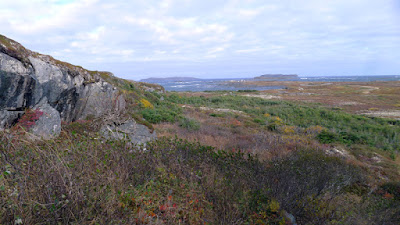An ancient Scottish Templar lies in state in eastern Massachusetts.
 |
| Who needs to go to Britain to see a knight lying in state on his coffin lid? |
Yesterday I stopped to paint in the marshes of Westford, Massachusetts with my pal Bobbi Heath. This is low country with oaks, spruces and pines, and the foliage this week is a perfect blend of russets, golds and cool greens.
My husband was flying to Boston from a week potting around England with two of our kids. I’d skipped the trip for Plein Air Brandywine Valley. I’ve seen enough knights reposing on their coffin lids that I wasn’t concerned.
 |
| A rubbing of the Westford boulder. It may be slightly enhanced. Courtesy of the Clan Sinclair Association (USA) |
We would paint until dusk and I’d collect Doug at the airport on the way home. Of course, that wasn’t what happened. Bobbi is still hobbling from her Lisfranc fracture. What started as a spattering mist developed into the cold, full-throated pissing of a late autumn rain. That’s pneumonia weather.
So, we did what artists love even better than painting: driving around looking at stuff we might paint sometime. And then Bobbi casually mentioned the Westford Knight. We have a fine St. George battling a dragon here in Maine, and I figured it was something like that.
 |
| The best photo I could get of the boulder on a dark and stormy night. |
Instead, it was a large hunk of granite under a Plexiglas cover, with something unmistakably carved into its surface. Carbon dating it would be impossible, since that only works with organic material. But granite is hard, and it couldn’t have been carved without tempered steel implements. That makes the rock either a hoax like Piltdown man, or a genuine relic of pre-Columbian exploration in the New World.
The rock was first mentioned in print in 1873. At the time, it was attributed to Native Americans. By the middle of the twentieth century, it had been identified as a medieval knight complete with sword and shield.
 |
| A rubbing of the Westford Boat Rock. Courtesy of the Clan Sinclair Association (USA) |
This was in part due to the influence of TC Lethbridge, English archaeologist, parapsychologist, explorer, and all-around crank—in short, just the sort of man we should have over to dinner. Lethbridge, while classically trained, came to believe that the archaeological establishment wouldn’t countenance any thinking outside the usual academic platitudes.
Lethbridge was consulted about the Westford carving, and he suggested that it represented a 14th century hand-and-a-half wheel pommel sword.
Enter the Clan Sinclair Association (USA). They believe their ancestor, Henry I Sinclair, Earl of Orkney, discovered the New World around the year 1400. Sinclair apparently landed in Nova Scotia and then potted down the coast to Massachusetts, where he wandered inland.
| My last evening at Plein Air Brandywine Valley. Courtesy of Bruce McMillan. |
They believe that the rock commemorates a fallen member of Sinclair’s party, Sir James Gunn, a Knight Templar. Historians counter that the Order of the Knights Templar had been publicly disbanded ninety years earlier. This presents no particular historical challenge to readers of dime-store fiction. We know that Knights Templar popped up everywhere for hundreds of years after they were banned.
There’s also a matching oval-shaped boulder in Westford’s library. It has a sailing ship and an arrow carved into its surface. “Archaeological evidence indicates this was probably carved at the same time as the Westford Knight carving,” the Sinclairs wrote. There is, of course, no archaeological evidence anywhere, because of that pesky carbon-dating problem.
There are relics all over the northeast that defy categorization, including the Spirit Pond runestones found in Phippsburg, Maine. We have proof that Vikings visited the New World. Are all these old stones fakes, or are some of them real artifacts?



